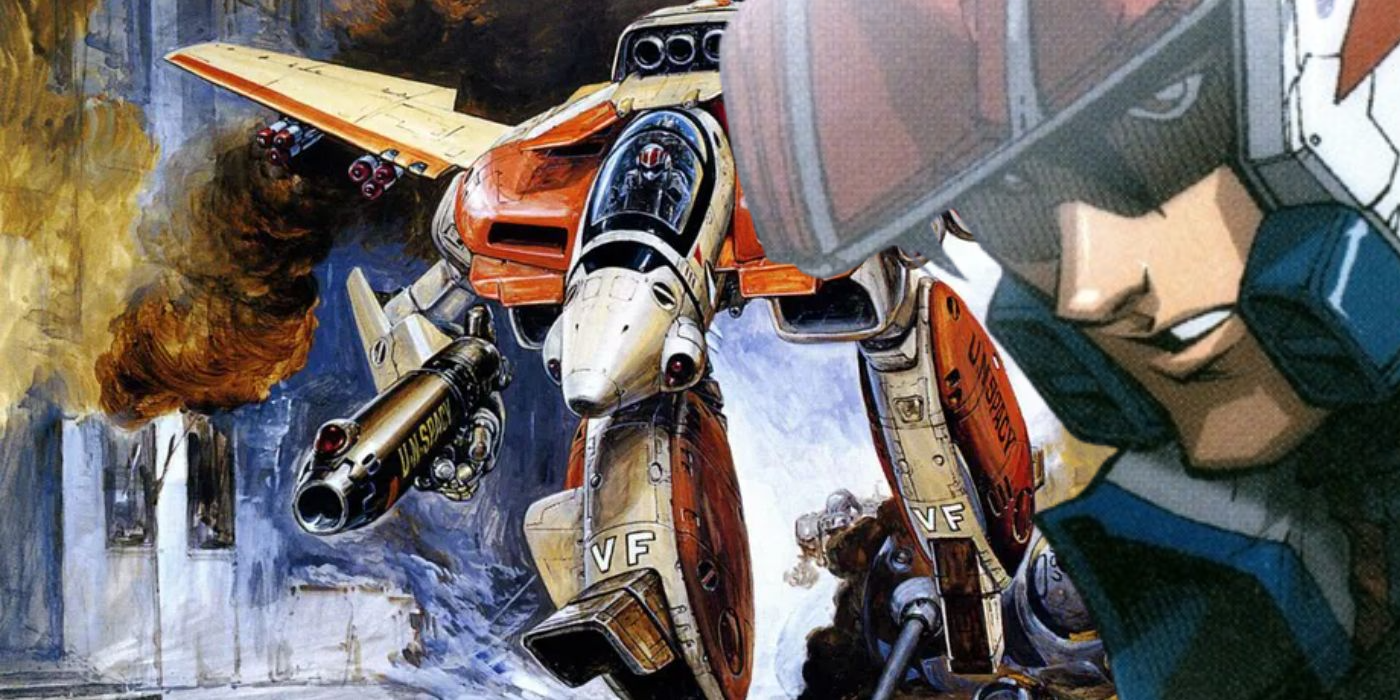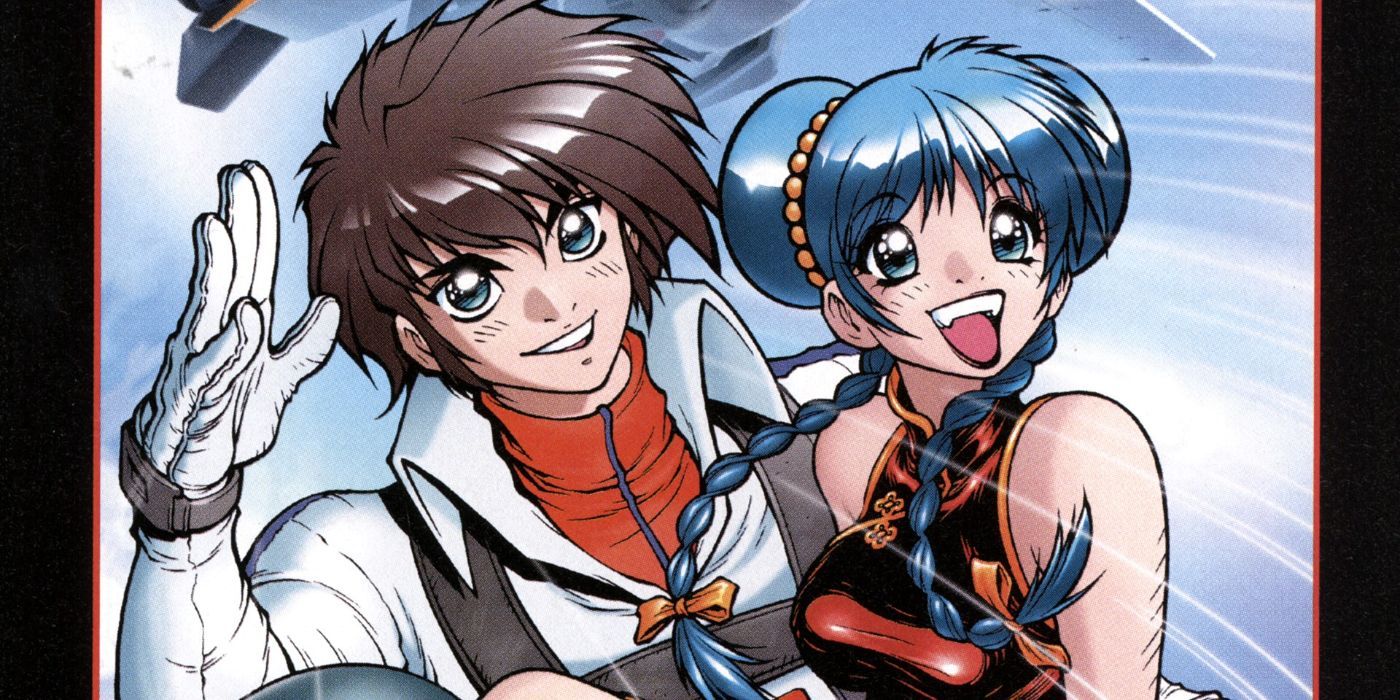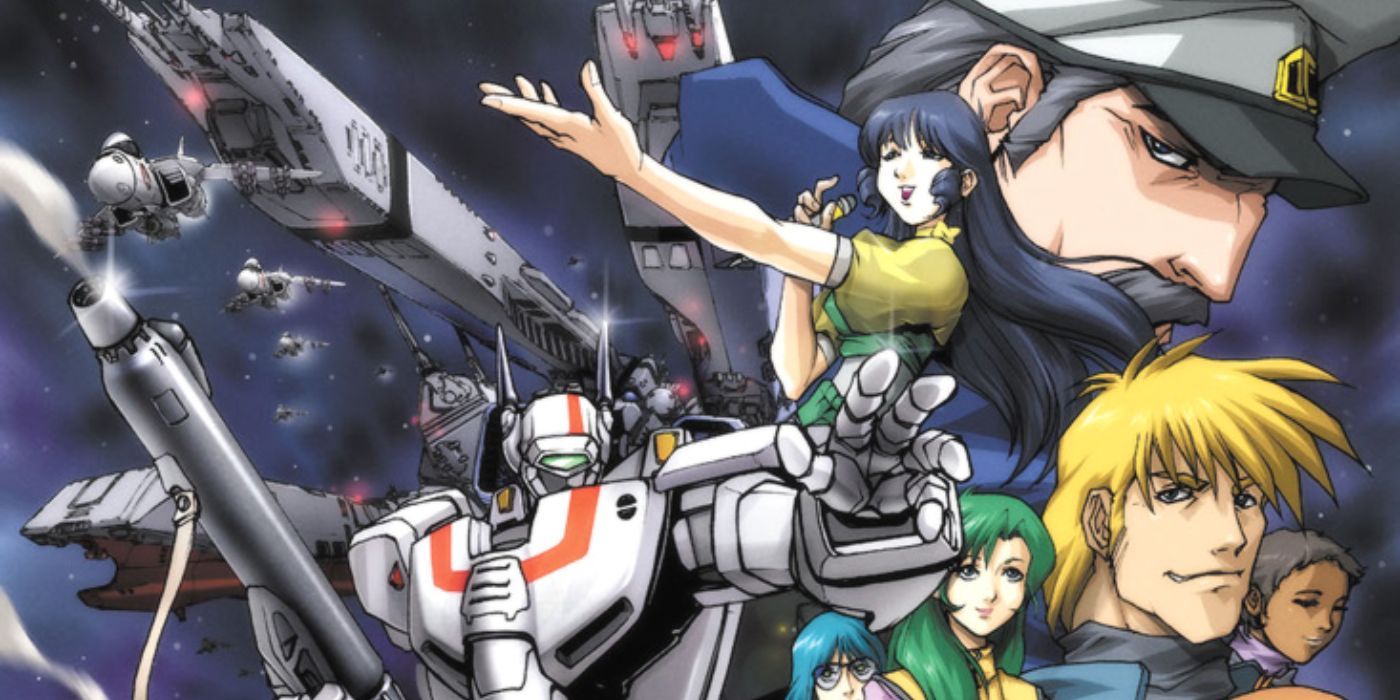Jim Lee's Revival of an '80s Mecha Sensation -- Robotech! (original) (raw)



Robotech has a complicated history in the world of anime, not only due to complaints about the liberties taken with the source material but also because the actual creation of the property itself is quite convoluted. The story begins in the early 1980s when American film and television company Harmony Gold saw potential in exporting anime (then called "Japanimation") to the West.
The first "anime" for many viewers, Robotech is as iconic as it is controversial. Many have yearned for a Robotech reboot, regardless of what medium it shows up in. Ironically, such a reboot was previously attempted in comic books, with a publisher synonymous with the grim and gritty 1990s involved in the venture. While it's largely forgotten nowadays, this brief revival attempted to capture the spark of what made the original series such a hit.
Updated by Timothy Blake Donohoo on September 25, 2024: Robotech is one of the most iconic and infamous anime franchises of all time, with plenty of detractors and fans. Thus, there was an attempted Robotech reboot by a once-popular comic book publisher. It's now long forgotten and lost to print, but it represents an important part of the brand's disparate story.
DC, Transformers, and So Many Legal Issues
As many fans are aware, the show that became known as Robotech in the West is actually an amalgam series of sorts. Screenwriter Carl Macek was hired to adapt the 1982 series Super Dimension Fortress Macross for daily American syndication. Still, the weekly series didn't have the requisite 65 episodes required for a syndicated series. A decision was made to pair Macross with two shorter anime, 1984's Super Dimension Cavalry Southern Cross and 1983's Genesis Climber MOSPEADA, to create an 85-episode series_._
The disparate continuities would be explained as time jumps between episodes, but this didn't make things easier regarding marketing and promotion. Complicating matters for the brand would be American model kit manufacturer Revell's existing deal with the producers of Macross and a few other anime studios for a line of mecha scale-model kits imported from Japan. Revell called their two model lines Robotech Defenders and Robotech Changers. Revell even had a deal with DC Comics to promote _Robotech Defenders_as a limited series.
Revell's existing contracts prevented Harmony Gold from producing merchandise for their animated adaptation of Macross, and much of the appeal of entering animation in the 1980s was indeed the merchandising profits. Harmony Gold entered a co-licensing agreement with Revell, one with their 85-episode series entitled Robotech. The co-licensing deal enabled Revell's nascent Robotech to benefit from a daily animated series promoting the brand and Harmony Gold to pursue other merchandising opportunities, like an action figure line from Matchbox.
As for DC's two-issue Robotech Defenders comic, which had nothing to do with Harmony Gold, the continuity established by writer Andy Helfer and artist Judith A. Hunt would be unceremoniously declared "non-canon" and forgotten. However, the comic used the same Robotech logo as the Harmony Gold production.
Predating even the Revell deal was a licensing agreement from FASA Corporation to use Macross designs in the American tabletop game BattleTech (originally released in 1984 as Battledroids.) Reportedly, Harmony Gold wasn't even aware of BattleTech's existence until after the launch of Robotech, but a subsequent lawsuit has prevented BattleTech from using any of the Macross designs.
In BattleTech lore, the now-forbidden Valkyrie, Warhammer, and Marauder mecha from Macross are called "The Unseen." Another legal complication would arise from one of the show's iconic vehicles. Inspired by the McDonnell Douglas F-15 Eagle and Grumman F-14 Tomcat, Macross' VF-1S Super Valkyrie Fighter is a striking design. It was so striking that Hasbro licensed the toy version (created by Japan's Takatoku Toys for its own Macross series) as a part of its 1985 line of Transformers action figures in America.
Considering that the toy was designed by mecha pioneer Shoji Kawamori -- who also designed the characters Westerners now know as Optimus Prime, Ultra Magnus, Prowl, and Ratchet for Japan's preceding Diaclone line -- Transformers fans could understandably feel as if Jetfire fit right in. Kawamori's time freelancing for Diaclone predates his development of Macross, but the designs have noticeable consistency_._ The character of Jetfire was intended to maintain his Macross design in both robot and vehicle mode in animation. However, complications with the Japanese toy rights had the Autobot renamed Skyfire in the Transformers animated series (which also aired in Japan) and redesigned to remove obvious similarities to the Valkyrie.
Harmony Gold and Matchbox, meanwhile, couldn't release a robot-to-vehicle Valkyrie toy, arguably the Robotech cartoon's signature vehicle, thanks to Hasbro's existing deal. Instead, Robotech fans had to be content with Matchbox's non-transformable version with some "legally distinct" design changes. Later model kits for the Macross series have been released in various anime hobby shops, though any new Robotech toys have been non-existent for decades.
Likewise, later toys for Jetfire in the Transformers series have eschewed and evoked designs from the original toy line and cartoon. Examples include the designs seen in the Unicron Trilogy of anime, which share the original Jetfire's classic white and red color scheme but have a much different aesthetic. On the other hand, his most recent action figures have combined these Generation 1 designs, even retaining the "gerwalk" transformation that's essentially a halfway point between jet and robot.
Robotech Joins That '80s Bandwagon
While Robotech never reached the heights of Transformers'American popularity, the series had a devoted fan following. As other 1980s properties received comic book revamps in the early 2000s, it seemed inevitable that Robotech would join the fad. After bouncing around various indie publishers in the '90s, the Robotech rights landed with Jim Lee's WildStorm imprint circa 2002. As Harmony Gold creative director Tommy Yune bluntly stated in the first WildStorm release's introductory text piece: "Everybody's jumping on the '80s bandwagon." Harmony Gold viewed the reignited enthusiasm for '80s properties as an opportunity to reboot Robotech, declaring the WildStorm series a new canon that superseded any preceding tie-in material.
February 2003's Robotech #0 from WildStorm (which was a former imprint of Image Comics that current DC Comics editor-in-chief Jim Lee founded) was a 12-page prelude to its opening "From the Stars" story arc, a prequel to the 1980s animated series. The creative team for the #0 issue indicated a desire to push Robotech as a real priority. Harmony Gold's Tommy Yune, who'd previously worked with Jim Lee at WildStorm, plotted the story arc. Jay Faerber, a writer who'd made a name for himself on Marvel's Generation X series, provided the dialogue. Faerber was a Robotech fan and one of the first writers of the 1980s generation to enter comics in this era, leading credibility to this reboot as a genuine passion project and not a quickie licensed cash-in comic.
The art team consisted of WildStorm's heavy hitters -- Jim Lee, Alé Garza, Carlos D'anda, Lee Bermejo, Trevor Scott, Richard Friend, and Sandra Hope uniting for a jam issue. Udon Studios provided colors in their distinctive anime flair (Udon had a history with Dreamwave, which pioneered that coloring technique in this era), and legendary letterer John Workman performed one of his final hand-lettering jobs before the craft went digital. "Toy comic" or not, the result was an impressive-looking production that showcased the possibilities of licensed comic book titles.
Space Oddities Invade 1999 (Or 2015?)

As established in the show's opening episodes, the story of Robotech begins when an abandoned alien battle fortress crashes to Earth, already embroiled in a world war, in the future year of 1999. The arrival of this alien oddity, named the SDF-1, inspires governments to stop the war, and the global scientific community spends the next decade reconstructing this damaged ship.
In 2009, the reconstructed ship launched into space. Suddenly, a race of gigantic alien warriors called the Zentraedi surfaces, assaulting Earth to steal the vessel. Young hotshot pilot Rick Hunter is our viewpoint character, and the iconic transforming Veritech fighter plane is introduced.
Issue #0's opening narration explains the bullet points behind the concept before veering into three vignettes (possibly) set in different time periods. The first few pages focus on Wolf Squadron, a fighter jet division of the Robotech Defense Force, serving the United Earth Forces fighting against the Zentraedi. This segment features Jim Lee's art, which is a nice reminder of how well he draws tech and military gear. However, readers only receive hints of anything distinctly Jim Lee since the artists attempted to stay loyal to the 1980s animation models.
Jack "The Giant Killer" Archer, a one-time mercenary who now leads a fighter crew called Wolf Squadron, is the first character identified in the story. The plot has Wolf Squadron, unaware the aliens have captured two MAC-II Destroid Monsters, falling for a Zentraedi trap. Backup arrives as Skull Leader, piloting the prototype YF-4 Lightning. He removes the re-appropriated Destroid Monsters, enabling Wolf Squadron to subdue the Zentraedi rebels. Skull Leader departs, informing Wolf Squadron that an assault team is en route to aid in "containment and clean-up."

This portion is largely an excuse to show off the various Robotech vehicles and the transforming VF-1 Valkyrie fighters. On that level, it's perfectly fine. The vehicles look cool, and the aesthetic of the 1980s show is well-represented, and there's a taste of how battle works in this world.
A new reader might think Wolf Squadron leader Jack Archer is the star of this story, but he drops out of the issue as the focus shifts to New Macross City, with a large narrative caption reading "2015. 1 year after the battle of New Macross City." The story also acts as if having the villains utilize Destroid Monsters is a shocking twist. Still, anyone unfamiliar with the gear used by both sides won't appreciate why this would be a stunning reversal. Choosing now, halfway through the story, to indicate the date and reference some other event that occurred a year earlier in the continuity also muddles things unnecessarily in the Robotech reboot comic book.
Regardless, Skull Leader lands his jet, removing his helmet and confirming that he's Captain Rick Hunter. Waiting until now to establish this Skull Leader as Rick is another needlessly confusing choice. Other characters in the lore have used this call sign, including Rick's brother. Dr. Emil Lang immediately reprimanded Rick for taking the prototype into battle. Rick's distracted from the lecture when he discovers Skull-One, the oldest Valkyrie fighter, is now being dissembled for structural analysis. However, the panel layout and word balloon placement make it hard to discern what the Skull-One even is. The sight inspires a flashback to a rainy day in 1999, six months before "the Macross incident."
A 2015 Flashback to 1999, Published in 2003
This begins the third portion of the story, opening with an air show featuring "Death-defyin'" Roy Fokker, Rick's adopted older brother. Roy refuses to deny the audience a show, piloting a German World War I fighter through the storm.
Following an argument between Roy and his father over this reckless stunt, Rick discovers his older brother has signed up to join the ongoing global war that predated the alien craft's arrival on Earth. By this point in the Robotech reboot, Rick naively wants to go with his big brother, but Roy tells him that war is no place for kids and that this conflict will be over by the time he's grown, anyway. Rick then asks Roy if he'll return to fly for the circus (nothing has indicated they're circus employees, adding to the story's confusion) after the war, with Roy promising he will.
A blurb announces the story continues in Robotech #1, and for a few pages, artists like Adam Warren and Kaare Andrews contribute pin-ups. Judged as a free or reduced-price promo comic, many of Robotech #0's shortcomings might be forgivable. However, this was released as a standard-priced issue, and it's hard to feel as if you're getting your money's worth, even with a few pages of Jim Lee interiors.
For any Robotech newbie, you get the sense that this stuff looks cool, but the story's nearly impenetrable. Someone in the WildStorm offices should've handed a draft to a reader unfamiliar with the lore to receive feedback because this is neither an easy read nor a great advertisement to newbies for an ongoing series. Still, the production values are admirable, and it's likely the only '80s revival comic that can boast Jim Lee's name in the credits.
Since then, Robotech has gone on to be hosted by different publishers, namely Titan Comics. The brand has never truly regained its former popularity in the West, and Macross overshadow_s it_ (deemed the "real thing" in Japan) in the East. That may become more the norm around the world, with various Macross anime set to find their way onto Western anime streaming services shortly. There's no word on a potential Robotech reboot in comics or elsewhere. The Wildstorm iteration was a largely failed effort, but it showcases just how popular the cartoon once was for a legion of fans.